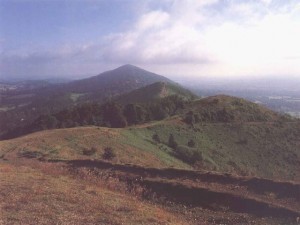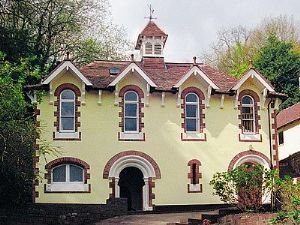Taking the Waters
The announcement has just been made that Malvern Water, a brand favoured by the Queen, has reached the end of its history after Coca-Cola said it would cease producing it because  the factory could not compete in today's bottled water sector.
the factory could not compete in today's bottled water sector.
The history of Malvern spring water and its uses can be traced back several centuries, pre-dating Richard Banister's Breviary of One Hundred and Thirteen Diseases of the Eyes and Eyelids of 1622. Banister wrote:
"A little more I'll of their curing tell.
How they helped sore eyes with a new found well.
Great speech of Malvern Hills was late reported
Unto which spring people in troops resorted."
A song reproduced in a book by Dr John Wall and again in the Nash 1778 History of Worcestershire, is said to have been composed by the Malvern parish clerk about the year 1590 and is one of the earliest records of the 'medicinal virtue and purity of these waters'. It is said that Queen Elizabeth I was partial to a glass of Malvern Water.
In a letter dated 18 July 1759 Benjamin Stillingfleet wrote to Mrs Montague: "I have been at Malvern about twelve days, where, with difficulty, I have got a lodging, the place is so full, nor do I wonder at it, there being some instances of very extraordinary cures, in cases looked on as desperate, even by Dr. Wall, who first brought these waters into vogue…The road is very fine, and made on purpose for the convenience of the drinkers".
 Malvern is in Worcestershire, set amidst very beautiful scenery. With a combination of pure air, pure water and beautiful countryside it became a desirable place to live and its population rose sharply from about 1800 onwards. In order to take advantage of the "water cure" and the visitors that it brought to the town, houses were built along the Worcester Road, as were hotels, the library and the Coburg Baths. In 1842 the hydropathic (water cure) doctors, Dr James Wilson and Dr James Gully, set up practice in the town. It became fashionable to consult them and the famous, the wealthy and the less wealthy tried the Cure, which involved adhering to a prescribed regime of "wrapping, bathing and douching in cold water, drinking the pure spring water, exercising, and strictly following a recommended diet." Famous Victorian patients included Charles Darwin's daughter, who died and is buried at Malvern after the cure did not work for her, Charles Dickens, Thomas Carlyle, Florence Nightingale, Alfred Tennyson, Samuel Wilberforce and Sir Edward Bulwer Lytton. However Wilson and Gully were not without critics and Sir Charles Hastings, founder of the British Medical Association, was extremely dismissive of the efficacy of hydropathy and of Dr Gully's methods.
Malvern is in Worcestershire, set amidst very beautiful scenery. With a combination of pure air, pure water and beautiful countryside it became a desirable place to live and its population rose sharply from about 1800 onwards. In order to take advantage of the "water cure" and the visitors that it brought to the town, houses were built along the Worcester Road, as were hotels, the library and the Coburg Baths. In 1842 the hydropathic (water cure) doctors, Dr James Wilson and Dr James Gully, set up practice in the town. It became fashionable to consult them and the famous, the wealthy and the less wealthy tried the Cure, which involved adhering to a prescribed regime of "wrapping, bathing and douching in cold water, drinking the pure spring water, exercising, and strictly following a recommended diet." Famous Victorian patients included Charles Darwin's daughter, who died and is buried at Malvern after the cure did not work for her, Charles Dickens, Thomas Carlyle, Florence Nightingale, Alfred Tennyson, Samuel Wilberforce and Sir Edward Bulwer Lytton. However Wilson and Gully were not without critics and Sir Charles Hastings, founder of the British Medical Association, was extremely dismissive of the efficacy of hydropathy and of Dr Gully's methods.
The sale of bottled water was a natural development of the Water Cure and over the years it provided work for many local people. The oldest bottled water in England comes from the Holy Well in Malvern Wells where bottling was carried out almost continuously from the 1620s to the 1980s.
So if you are looking for a different setting for story featuring a Regency spa, or if you want to visit an English spa town for research or even to take the water cure yourself, you could try Malvern instead of Bath, Cheltenham or Harrogate!
Today I am a guest at the Book Lovers Inc site. Come and join me there to talk about your favourite indulgences and for the chance to win a set of the Scandalous Women of the Ton books!
©2010 Nicola Cornick. All Rights Reserved.
.


